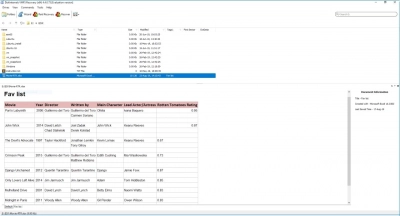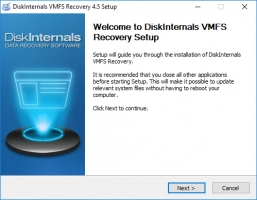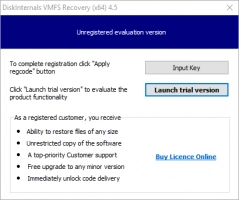VMware ESXi vs vSphere vs vCenter – Key Differences Explained
As virtualization becomes increasingly essential for businesses of all sizes, understanding the differences between VMware’s primary solutions—ESXi, vSphere, and vCenter—is crucial for IT professionals and business leaders alike. This article dives deep into the distinctions, unique features, and applications of each of these VMware products, helping you navigate which solution best fits your virtualization needs. By the end, whether you're a beginner or an experienced IT administrator, you’ll have a clear perspective on how ESXi, vSphere, and vCenter serve distinct roles within VMware’s ecosystem and which one, or combination, will most effectively support your infrastructure.
Understanding VMware’s Core Components: ESXi, vSphere, and vCenter
When exploring VMware’s virtualization solutions, three core components often come up: ESXi, vSphere, and vCenter. Each of these products plays a unique role in VMware’s ecosystem, providing essential functionality for building, managing, and scaling virtualized environments.
- VMware ESXi: As the foundational hypervisor, ESXi is where virtualization starts, enabling the creation and management of virtual machines (VMs) directly on physical servers. Its lightweight, bare-metal architecture is designed to maximize server performance and reliability.
- VMware vSphere: Often described as VMware’s flagship virtualization platform, vSphere is essentially the suite that encompasses both ESXi and other management tools, providing a unified platform for deploying, running, and managing VMs at scale. It’s the engine behind efficient data center operations.
- VMware vCenter: Serving as the centralized management hub, vCenter simplifies administration across multiple ESXi hosts, allowing for centralized monitoring, resource management, and automation. It’s the key to efficient and scalable virtualization management.
VMware ESXi – The Foundation of Virtualization
At the core of VMware’s virtualization stack is VMware ESXi, a robust Type-1 hypervisor that serves as the primary layer for virtualization. Designed to run directly on hardware without an underlying operating system, ESXi is often referred to as a "bare-metal" hypervisor. Its role is to allocate resources from the physical server to multiple virtual machines (VMs), allowing them to operate independently on a single piece of hardware. As the foundation of VMware’s ecosystem, ESXi is essential to running and managing virtualized environments, forming the base on which both vSphere and vCenter operate.
VMware vSphere – Beyond Virtualization: Full Stack Infrastructure
VMware vSphere takes ESXi's core capabilities further, transforming it into a comprehensive virtualization platform. While ESXi functions as the hypervisor layer, vSphere integrates this with additional tools and services, providing end-to-end infrastructure for virtualized data centers. In addition to enabling resource pooling, network management, and data protection, vSphere offers high-availability features, fault tolerance, and load balancing, making it essential for large-scale, resilient deployments. This section will highlight how vSphere, by bundling ESXi with management services, supports full-stack infrastructure management, standing as the backbone of VMware’s advanced virtualization platform.
VMware vCenter – Centralized Management for Virtualized Environments
To efficiently manage large-scale virtualized environments, VMware vCenter acts as the centralized management hub for VMware infrastructure. Unlike the vSphere client, which allows limited host-specific management, vCenter provides extensive control over multiple ESXi hosts and their associated resources. With vCenter, administrators can manage clusters, automate operations, monitor performance, and configure resource allocations across their entire environment. In this section, we’ll explore how vCenter differs from both vSphere and ESXi, emphasizing its role in unifying virtualization management for seamless scalability and efficiency.
Key Differences: vSphere vs ESXi vs vCenter
When choosing among VMware’s core products—ESXi, vSphere, and vCenter—understanding their unique capabilities and intended use cases is essential. Here’s a side-by-side look at each product to highlight their distinctions:
| Feature | ESXi | vSphere | vCenter |
|---|---|---|---|
| Role | Hypervisor for VM management | Comprehensive virtualization platform | Centralized management for ESXi & vSphere |
| Functionality | Runs VMs on physical hardware | Combines ESXi with tools for infrastructure | Manages multiple ESXi hosts and clusters |
| Scalability | Limited to individual hosts | Scales to data center level with tools | Essential for managing large deployments |
| Management | Host-level configuration | Includes vSphere Client, HA, DRS, FT | Centralized admin, automation, monitoring |
| Use Case | Basic VM deployment | Full data center and cloud integration | Optimal for complex, multi-host setups |
In practice, a small business might start with ESXi to host essential applications, while a medium-sized organization may opt for vSphere to leverage high availability and advanced features. For large enterprises, vCenter enables centralized management and automation, ideal for scaling and optimizing a virtualized infrastructure.
Choosing Between ESXi, vSphere, and vCenter – What’s Right for Your Business?
Selecting the right VMware solution depends on the size, scope, and specific needs of your business. Here are some scenarios to guide your decision:
- Small Businesses: For companies needing simple virtualization, ESXi alone can be sufficient. It’s a cost-effective way to start with virtual machines and provides essential hypervisor functionality without additional complexity.
- Medium-Sized Businesses: As virtualization needs grow, vSphere offers a more complete solution, integrating ESXi with high availability, load balancing, and resource management tools. This setup supports scalability while ensuring resilience and efficiency.
- Large Enterprises: For larger infrastructures requiring centralized control over multiple hosts, vCenter is invaluable. It enables advanced administration, automation, and monitoring, making it ideal for complex, multi-host environments that demand centralized and automated management.
By choosing the right VMware product, businesses can optimize their resources, streamline management, and support future growth in line with their virtualization needs.
How File Recovery Fits into VMware’s Ecosystem
In the world of virtualization, maintaining data integrity and ensuring access to critical files are paramount for business continuity. VMware’s virtualization tools—ESXi, vSphere, and vCenter—provide a powerful platform for running and managing virtualized environments. However, even with VMware’s robust architecture, the risks of data loss, corruption, and accidental deletion are ever-present. These challenges make file recovery solutions an essential addition to VMware’s ecosystem, particularly for enterprises relying on VMware products to manage and protect their virtual infrastructure.
DiskInternals VMFS Recovery™ stands out as a specialized tool designed for VMware’s Virtual Machine File System (VMFS), which is the storage format ESXi uses for virtual machine (VM) storage. VMFS is optimized for high performance, allowing multiple ESXi hosts to read and write to the same storage device concurrently. However, this complexity can also introduce points of failure. Disk corruption, unexpected power loss, hardware malfunctions, or configuration errors can render virtual machines and their underlying VMFS storage inaccessible or corrupted.
DiskInternals VMFS Recovery™ addresses these issues directly by providing advanced file recovery capabilities specifically tailored for VMFS environments. Here’s how it helps VMware users secure their data and restore virtual machines in case of failure:
- Targeted VMFS Data Recovery: DiskInternals VMFS Recovery™ can access and recover files from damaged or corrupted VMFS volumes, including virtual disks (VMDKs) and individual files within virtual machines. This capability is crucial for restoring specific data without needing to revert to an older, potentially outdated backup or reconfigure the entire virtual machine environment.
- Comprehensive Recovery Options: In addition to recovering files and folders, DiskInternals VMFS Recovery™ can restore entire virtual machines. For organizations that rely heavily on VMware for critical applications, this level of recovery can mean the difference between hours of downtime and a quick restoration process, allowing them to maintain business operations with minimal disruption.
- Support for Various Scenarios: The tool is effective in a wide range of failure scenarios, from accidental file deletions to system failures and corrupt VMFS structures. For example, if a VMFS datastore becomes inaccessible due to hardware issues or file system errors, DiskInternals VMFS Recovery™ can access the underlying data, identify recoverable files, and restore them securely.
- Seamless Integration with VMware: DiskInternals VMFS Recovery™ is designed to work within VMware environments, making it easy for IT administrators and virtualization specialists to add it to their toolkit. Its user-friendly interface and automated recovery process make it accessible for administrators to recover data without extensive technical overhead or complex configurations.
- Enhancing Data Protection Strategies: Beyond immediate recovery, incorporating a solution like DiskInternals VMFS Recovery™ into a VMware environment reinforces the organization’s data protection strategy. In tandem with regular backups, disaster recovery planning, and redundancy, VMFS Recovery™ offers a reliable way to manage unexpected data loss scenarios effectively.
For the whole process to go quickly and smoothly, use the step-by-step instructions for the DiskInternals VMFS Recovery application.
Downloading and installing the application occurs first.
After that, you open the application and connect via SSH, if necessary.
Then open the drive and click on the scan button. Wait for the process to complete.
Next, you are required to find the VMDK files and mount them.
Further, previewing found files and documents is completely free.

After that, buy a license, then automatically receive a license key. Thereafter, you will have access to export data to any information storage device.
Conclusion – VMware ESXi, vSphere, and vCenter: Which Should You Use?
Understanding the differences between VMware’s core products—ESXi, vSphere, and vCenter—is crucial for building an effective virtualization strategy. Each tool plays a distinct role within VMware’s ecosystem, catering to different needs and operational scales.
- ESXi serves as the foundation, functioning as a powerful Type-1 hypervisor that allows multiple virtual machines to run on a single physical server. It’s ideal for businesses starting with virtualization or those that need a simple, cost-effective way to host VMs directly on hardware.
- vSphere extends ESXi by bundling additional tools and services for high availability, resource management, and infrastructure resilience, making it the backbone of VMware’s virtualization platform. Medium to large organizations seeking robust data center virtualization capabilities will benefit from vSphere’s comprehensive features.
- vCenter is the centralized management hub that ties everything together, offering administrators control over multiple ESXi hosts and streamlined management of vSphere environments. For enterprises with large-scale deployments, vCenter enables efficient monitoring, automation, and resource optimization.
Together, these tools create a versatile and scalable virtualization ecosystem, each complementing the other. Choosing the right combination depends on your organization’s size, complexity, and specific needs. Small businesses may find ESXi sufficient on its own, while mid-sized companies benefit from the added capabilities of vSphere. For large-scale, multi-host environments, vCenter is indispensable for efficient and centralized management.
By selecting the right combination of VMware tools, organizations can optimize performance, ensure data protection, and streamline management—all crucial elements in a successful virtualization strategy. With the right approach, ESXi, vSphere, and vCenter can provide the flexibility, resilience, and control needed to support any organization’s virtualization goals.



